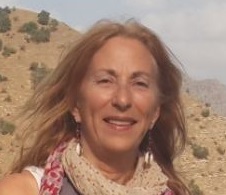
Special Report by Dr. Amy L. Beam:
It is safe, legal, beautiful, and remarkable to travel now in southeast Turkey. Outsiders are so rare that visitors are treated like celebrity stars. The democratic, secular Kurds have dominated world news recently in their heroic fight against the Islamic State or ISIS in Iraq and Syria. North of the borders, in Turkey, 20 million Kurds represent 22% of the population. For thirty years they engaged in armed conflict with the Turkish state for constitutional recognition of their right to express their Kurdish ethnicity and speak their own language. Since March 2013, a tentative peace has prevailed.
Although there are many archeological sites and wilderness wonders to wow you, the best part of the trip is getting to know the Kurdish people themselves, their painful history, and their famous Kurdish hospitality. If you pause more than one minute in a mountain village or town, you will be surrounded five-deep by locals who enthusiastically ask where you are from and invite you into their homes. If you are Turkish and want peace, then it’s time to go see your own country and meet your neighbors. You will be surprised at the warm welcome you will receive.
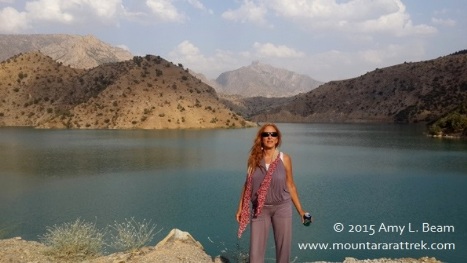
Amy L. Beam, owner of Mount Ararat Trek, is possibly the first person to swim in man-made Hilal Lake in 2013.
There is an imaginary demarcation line, from the ancient silk-route town of Mardin northeast to Van over which those adventurers undaunted by media propaganda dare to cross. U.S. government employees, including U.S. military personnel are forbidden to cross this imaginary line, even when out of uniform. However, there are no restrictions on civilians or foreign visitors.
I met in Ankara with the political specialist on Kurdish issues at the U.S. Embassy, who herself has never been east of Mardin. . . . a curiosity for a Kurdish specialist. I asked her when the PKK would be removed from the terrorist list. She explained “Kurds have to be patient. Maybe in another generation. Nelson Mandela was President of South Africa for 14 years before the ANC was removed from the terrorist list.”
Apparently she’s never been to Diyarbakir at Newroz celebration to experience the solidarity and determination of the Kurds. Newroz is the Kurdish New Year which celebrates spring and a rededication to achieving full human rights and recognition of Kurdish identity under the constitution. This year will be bigger than ever. Kurds are not planning to wait for another generation.
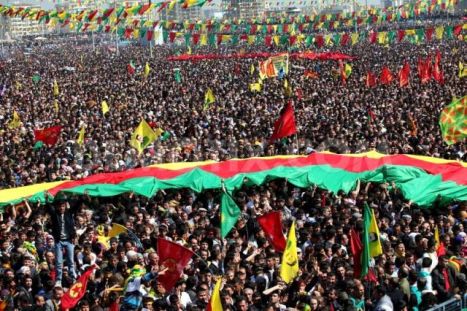
Kurds celebrate Newroz, Kurdish New Year, March 21, in Diyarbakir, Kurdish capital with population of 1.6 million.
Turkey is only one country, although the visitor will surely feel that he/she has been transported to another country . . . so different is western and eastern Turkey in culture, style, music, language, and geography. Beyond anything else, it is the sense of Kurdish solidarity one feels in the region.
Many Kurds call the southeast North Kurdistan, on the border of Kurdistan, Iraq; but in reality there is no official Kurdistan in Turkey. Press freedom is under assault in Turkey (some say it’s dead), so calling this region Kurdistan can get foreign journalists banned. The Worker’s Kurdistan Party (PKK), on the terrorist list of Turkey, the EU and the US, seeks full democratic rights within Turkey, and no longer seeks a separate country, although journalists provocatively persist in referring to PKK as “separatists,” apparently to keep the hate-rhetoric against Kurds going strong. The PKK is widely and openly supported by Kurds in spite of harsh anti-terrorism laws for “spreading terrorist propaganda.”
At every Jandarma checkpoint I sit down and have tea with the commander and lecture him to stop using the word “terrorist.” “We are in a peace process now, please don’t refer to Kurds as terrorists. Tourism will be good for the country. I promise to send you tourists.” My first motorcycle tourists arrived the next month, to whom the Jandarma commander said, “Oh, Amy, she’s great!”
When stopped at security check points, persons should roll down their windows, show their IDs or passports, and be respectful. If you are in a car, they will look in the trunk for smuggled goods. Cigarettes cost a dollar a pack in the southeast. My car was searched on a lift and with a drug-sniffing dog for 25 minutes south of Bitlis. After finding no drugs, they fed me lunch and apologized for the “necessity” of their search. Don’t smuggle drugs, because no one’s coming to your rescue.
The most remarkable thing about traveling in the southeast is that the roads are new, but deserted. The border between Syria and Turkey is protected. The current conflicts are contained in Syria and Iraq. Southeast Turkey is peaceful.
A single woman is safe traveling alone even without speaking the language (although she must be wary of handsome con artists as in all tourist destinations). Download a translation program onto your mobile phone. In the Kurdish culture, sex for women is reserved for marriage, so foreign women get lots of attention. Hotels, however, forbid local guests in the room. Best to keep your legs crossed and guard your honor. Foreign men, don’t even think about it.
It is a moral imperative that Kurds must look after visitors. All doors are open to visitors. I am sure I can rest my head in any house in the southeast. There is always a futon and pillow for a guest. One family passes me along to the next one down the road. I have been the guest of dozens of families. Extended families live together with three generations under the same roof. It is rare to find a single person living alone, so it may be okay to go home with a man to be the guest of his family. Ask some questions first.
In Uludere, when there were no rooms available in the Teachers’ House (the only rooms in town), the manager of the phone store called some friends until one showed up and took me home to his wife and kids. I had a delightful dinner practicing Kurdish words and spent the night with them.
Minibus service between towns is safe and easy (but ends at sundown) in spite of western government warnings not to ride the buses or talk to strangers on the sidewalk. This is sheer nonsense. Don’t be deterred by that fear-mongering label of “terrorist” that has been rendered meaningless with over-use.
Thirty years of lop-sided media-spin painting all Kurds as terrorists has cast an irrational pall of fear over the southeast even for Turkish citizens, like the myth of the Bermuda Triangle. One might disappear without a trace. While it is true that hundreds of Kurds did disappear in the 1990s, most disappearances were at the hands of the secret Turkish security forces known as JITEM or the hated paramilitary Village Guards. Only a few Turkish security forces have ever been prosecuted for their acts of torture and murder of Kurds. Extra judiciary disappearances of Kurds have not been reported since the peace process between the Turkish government and its Kurdish population began two years ago.
Travel advisories warning tourists not to travel in southeast Turkey amount to a conspiracy to enforce an economic blockade against the Kurds. However, local municipalities have all produced high-quality books and color brochures promoting tourism attractions in their regions. The southeast abounds in archeological sites, museums, and natural wonders.
If you are the sort that likes to be the first to a region before it is “discovered” by travel agencies, then southeastern Turkey (also referred to as Anatolia) is your dream destination. Fly into Diyarbakir, rent a car and follow this route: Mardin, Midyat, Hasankeyf, Batman, Siirt, Sirnak, Hilal, Roboski, Beytussebap, Hakkari, Hosap Castle, Akdamar Island in Lake Van, Van, Zilan Valley, Ilica, Ahlat, Nemrut Crater.
Diyarbakir – Celebrate Newroz in Kurdish Capital
Diyarbakir’s Kurdish name is Amed. With a population of 1.6 million and growing, it is referred to as the Kurdish capitol. It is a city of political activism for the Kurdish cause. The ancient defense wall around Diyarbakir is the second-longest in the world, after the Great Wall of China.
Mardin – Ancient City on Silk Route
Mardin is a cobbled city once on the ancient silk route from Asia to Europe. With a multi-ethnic population, it still remains the city where east (Turkey) meets west (Turkey). The entire old city is an architectural museum which sits atop a hilltop looking into the Syrian desert. It’s Arabic-style historic buildings are being restored, and Mardin is promoting itself as an alternative Hollywood with attractive free trade zone incentives for filmmakers. It is a romantic and mysterious setting that has not changed much in 1000 years. Wander through the maze of narrow, winding cobbled streets and through the covered bazaar for shopping. Silk scarves, gold jewelry, hand-tooled brass trays, and chocolate-covered almonds are specialties. Mardin is too small to get lost.
Mardin’s main attraction is the impressive Mardin Museum near the town center. It houses archeological wonders such as cuneiform stelaes and ancient maps by the famous cartographer Piri Reis. Another architectural beauty of arches and carved stone work is Kasimiye Medresesi built in 1502. Just before the Mardin Apart Otel, is the Mardin Youth Center which offers English classes, saz jam sessions, and other activities. Stop in for tea and a chat with Kurdish university students. Enjoy your dinner under the stars in one of the many open terrace restaurants. One can easily stop here for a few weeks of exploration and photography before venturing further southeast.
Midyat – Mor (Saint) Gabriel Monastery
In 1915 an estimated 25,000 Christian Assyrians were killed by the Ottoman Empire in Midyat alone. The Mor Gabriel Monastery, with a long walled-in property, sheltered some who survived. It sits isolated in the arid country-side. Built in 397, it is one of the oldest functioning monasteries in the world. It takes in Christian orphans, many of whom act as guides for visitors. The building itself is a work of art both outside and inside and worth the diversion to get there. In recent years, Turkey expropriated large parcels of land owned by the Monastery, but the court ordered it returned in 2014.
Hasankeyf – See It Before It’s Under Water
Hasankeyf, a 12,000 year-old ancient city of 6,000 cave dwellings and artifacts on the Tigris River, is scheduled to be flooded under the Ilisu Dam reservoir in 2015. Local residents as well as conservationists have been fighting the plan. The waters are set to rise about 60 meters, and a new town is being built on the mountain slope across the river. Apartments selling for $85,000 USD are beyond the means of most local residents who will be displaced.
Batman – Siirt – Sirnak Scenic Drive
Batman is a modern growing city with new high-rise apartments for sale everywhere. There are two routes from Batman to Sirnak. The easy one is via Cizre. The scenic mountainous one is via Siirt and takes five hours. Minibuses travel both routes during daylight hours only. Change buses in Siirt. The road is new and empty and follows the Botan River valley, soon to be flooded by Pervari dam for hydroelectric power. The drive south of Siirt is Turkey’s version of Tuscany, with one amazing vista after another. You will also pass many deserted villages that Turkey forcibly evacuated.
Sirnak Shingal Refugee Camp and Cudi Mountains
When the Islamic State (also known as Daesh, ISIS, or ISIL) attacked the Yazidis in Shingal, Iraq, on August 3, 2014, the entire population fled. Twenty-five thousand Yazidis took asylum in Turkey. Sirnak Shingal Yazidi Refugee camp is 10km outside of town and is home to 1000 Yazidi refugees who are being supported entirely by Kurdish donations and volunteers. Nearly all families had members killed or kidnapped. Yazidis appreciate visits from outsiders to listen to their stories of the atrocities they suffered and to bring aid. They wonder if the world has forgotten them. Go say hello.
Hilal Lake
Turkey is building 22 controversial dams, financed by the GAP project, on the rivers in the southeast and creating man-made lakes to generate hydroelectricity. Local residents oppose the disruption of their village life and the threat a dam above their villages poses. If the government opens the flood gates, they argue, the villages below will be destroyed. The dams loom above their heads like a giant Godzilla. Nonetheless, the building is proceeding rapidly with most dams nearing completion and the government paying residents to move. It is hoped that a series of lakes will transform the dry, dusty terrain into green areas and provide electricity for Turkey.
Lake Hilal is now complete. I am sure I was the first person to swim in it in 2013. The cold mountain water is exhilarating. The surface is flat as a mirror, a water-skier’s dream. Hilal Lake region offers opportunity for anyone with financing to open cottage tourism businesses offering kayaking, camping, horseback riding, trekking, bed and breakfast stays, and fish restaurants. Private partnerships with locals is the way to go. Until then, you will need to bring your own paddle and kayak. Ankara central government invests in tourism development projects for western Turkey, but is not investing in tourism for southeast Turkey.
Old Hilal and New Hilal
New Hilal is on the main road one hour from Sirnak. At the end of Ramazon fasting month, Bayram is celebrated with three days of Kurdish music and dancing on the soccer field, often to celebrate a wedding. There are no hotels in Hilal, but visitors will be welcomed into the local homes and even loaned a traditional dress.
After Bayram, Kurds who are old enough to remember when they lived in Old Hilal journey up the mountain canyon to pick grapes that have now overgrown the trees. According to the CIA map, Hilal is still 10km up a canyon road, even though it is deserted. Hilal is among the most beautiful spots on earth with towering vertical rock mountains and poplar trees. In 1994 the Turkish government forced its 5600 Kurdish residents to leave Hilal, then burned and demolished their houses. Now Old Hilal is only a memory, but one that never dies. It’s a lovely drive up along a gurgling stream.
Roboski and Gulyazi Cemetery of Massacre Victims
The first time I visited Roboski, I went to say “I’m sorry” for the U.S. involvement in the Roboski Massacre. On December 28, 2011, 34 innocent boys and young men doing border trading on their mules were bombed and killed a few meters over the mountain ridge inside Iraq. The U.S. flew the drone, passed information to Turkey, and Turkey flew two F-16s in a cross-border bombing mission. Turkey called it a mistake but didn’t apologize.
People from many countries in the world make this journey to the mountain villages of Roboski and Gulyazi to express their sympathy and solidarity with the community. All homes are open to visitors. Once a week, families of the victims visit the gravesides in the cemetery between Roboski and Gulyazi. A memorial museum is being built on the site. Over 5,000 people attend the annual memorial held each year on Dec. 28.
In 1934, Turkey forced all Kurdish names of people and places to be changed to Turkish names. Look for a road sign reading “Ortasu,” the Turkish name for Roboski.
Beytussebap Kato Kuzu Kırpma (Sheep Shearing) Festival
Beytussebap is up in the mountains off the main road from Uludere to Hakkari. Ferasin on Kato Mountain is a lush green valley where shepherds take their flocks in the summer. In August thousands of Kurds gather in Ferasin on Kato Mountain for three days of music, dancing, food, fireworks, speeches, camaraderie, and of course, sheep shearing. The mountain becomes a tent city. Ferasin used to be a village of 1000 until the Turkish government bombed, burned, and evacuated it in 1995. From 1988 to 1995 the government destroyed 35 villages around Beytussebap. Kurds return each year to remember and to celebrate their culture and solidarity. Visitors will be welcomed.
Hakkari – Rafting on the Zap River
The spectacular drive from Hilal to Hakkari takes 3 hours through steep mountains on virtually deserted roads. Go with a full tank of gas and a car with a strong engine for climbing hills. There are no gas stations along the way. At the Jandarma security check point, past the Beytussebap turnoff, stop for tea with the commander and tell him, “Amy says hello.” Bring your own raft or kayak and arrange for a drop-off and pick-up on the Zap River which flows smoothly alongside the road from Hakkari south for 90 miles. Spend the night in one of the two new 3-star hotels in Hakkari or camp by the river.
Hosap Castle
After years of restoration work, Hosap Castle reopened for tours in 2013. We arrived at Hosap Castle at 11 PM. The nearest hotel was not for another 45km, so up the hill we drove to see the castle at night. I was dwarfed by the awesome height of its walls. After an hour’s chat with the manager and armed guard, the manager gave us the key to his brand new container office, opened up two mats and blankets, and pointed to his house at the base of the castle. “Lock yourselves in and come for breakfast in the morning.” In the morning we met his three children, all learning English, and he gave us a private tour with history. The many holes in the castle wall were for carrier pigeons, precursor to email. Restoration continues with the rebuilding of the wall around the old village of Hosap.
Akdamar Island, Lake Van
The bas-relief stone carvings that ring the top of historic Armenian Church of the Holy Cross on Akdamar Island are truly extraordinary. Images depict well-known Biblical stories. In April 1915, the monks on Akdamar were massacred and the surrounding buildings destroyed. In 1951 the Turkish government made a decision to destroy the church, in its long campaign of destroying all traces of anything Armenian, but the writer Yasar Kemal managed to stop the destruction. Eventually, the government was convinced it would be good for tourism to renovate the church in 2005-2006. It opened to the public in 2007. Every November about 3,000 Armenian descendents visit to attend a church service.
After your boat trip to Akdamar Island, enjoy lunch across the road at Akdamar Restaurant owned by Ibrahim who is multilingual. He offers free camping, provided you buy your meals in his restaurant.
Urartu Carpet and Kilim Store
Urartu carpet and kilim store is on the shore of Lake Van. Young women are trained for several years in the highly skilled art of making carpets and kilims. Over 3000 are available for viewing at prices much less than in Istanbul. The store will ship anywhere in the world.
Van Fortress
The Van Fortress (Van Kalesi) is the best example of the ancient kingdom of Urartu which is 2000 to 5000 years old. It was built in the 9th to 7th century B.C. and overlooked the capital of Tushba, now the modern-day Van. After the Urartians, it was the capital of the Christian Armenian nation until modern history. It survived the 2012 earthquake undamaged. Van city is mostly rebuilt and back to normal.
Searching for ancient buried artifacts in the Van region is a craze of many locals. There is a cottage industry of selling antiquity pieces, especially ancient coins, to naive and greedy foreigners. But buyer beware, many of the artifacts are fakes. Because Turkey has strict laws prohibiting taking artifacts out of the country, the foreigner who gets cheated will have little recourse for justice. Trading in illegal artifacts of antiquity is as dangerous as selling heroin. Don’t do it. Be happy with a kilim and visit to the archeological Van Museum.
Lake Van Shoreline
Head north on the east coast of Lake Van to Ercis. Stop for a swim in this mysteriously salty inland lake. Follow the signs toward Ercis, then Ilica, up the Zilan River Valley.
Zilan Valley Memorial
In 2012, residents of Hasan Abdal in the Zilan Valley built a memorial, at their own expense, of white boulders on the spot where 7,000 people were massacred by the Turkish state. By the time I ventured up the Zilan Valley north of Ercis, in 2013, I was pretty adept at finding a local guide. All I had to do was stop my car and step out. In sixty seconds, a man came out of his house to greet me and my interpreter. He took us to one of the actual sites of the July 12-13, 1930 Zilan Valley massacre. For his safety, he asked not have his name used. It is still risky to talk about recent history.
His grandfather, Kasim Şahin, was a young man when he was shot in the massacre, but survived by being buried under the pile of corpses as people were shot and killed. He escaped with his life and moved back in the 1980s after the government allowed people to return. All the people from between 10 and 15 villages were brought to this one spot at the edge of the Zilan River and shot. The river ran red. Soldiers stood on the hill overlooking the flat grassy area and killed them. The Jandarma then occupied the house which is still standing overlooking the massacre site.
I asked how many people had visited to write about the memorial site. “You’re the only one,” he said. “There was one man from the government who came up the first year and took some photos, then left without talking to anyone.”
Ilica Hot Springs
Continue 45 minutes up the Zilan Valley road to Ilica (pronounced ilee-ja) and enjoy a long, leisurely soak and swim in a thermal pool from the natural hot springs. Ask for the big pool. There are modest hotel rooms if you wish to spend the night.
Ahlat
Ahlat is a tiny medieval town, mostly deserted, on the northwest coast of Lake Van. It has a museum and six-foot high, ornately carved grave stones and tombs in old Armenian cemeteries. There is hourly minibus service to Ahlat from Tatvan, the resort city on the southwest corner of Lake Van.
Nemrut Crater
At the southwest corner of Lake Van, before the busy city of Tatvan, is Nemrut Crater (not to be confused with Nemrut Mountain near Adiyaman). This is a wilderness area for camping. Wake up at first light to birds skimming the water and swim in very warm water of the caldera lake. There are a number of confusing roads. The paved road is new. If you get lost, you might end up at the cold pond with a sandy shore, but dawn is breathtaking and worth it. We slept in the car and locked the doors. We were the only visitors that day to Nemrut Crater.
Getting To Southeast Turkey
There are airports in Mus, Diyarbakir, Mardin, Batman, Sirnak (south of Cizre), and Van. Use Turkish Airlines or Pegasus airlines. Car rentals, at an average of $50 US dollars per day, are available but must be returned to the pickup location (or pay a large surcharge). Visitors may drive their car from another country and get a six-month visa for the car. Buy mandatory car insurance at the border crossing for about $35 US dollars. The bus from Istanbul to Diyarbakir takes 20 hours and costs about $45 US dollars, half the price of an airline ticket.
Guided Tours
Mount Ararat Trek has been guiding tours to the summit of Mount Ararat since 2007 in partnership with local Kurdish English-speaking guides and a TURSAB Turkish-licensed travel agency. They now offer personalized driving tours in southeast Turkey. One to three people can go in a car or organize a group of 6 to 13 for a minibus tour. Write to owner amybeam@yahoo.com for information and price quotes for a driver/guide and vehicle or for all-inclusive tours that include meals, hotels, home stays, and admission fees. It makes a big difference to have an interpreter with you.
Dr. Amy L. Beam promotes tourism in eastern Turkey at Mount Ararat Trek and writes political and historical commentary on Kurds in Turkey. Follow her on Twitter @amybeam or email her at amybeam@yahoo.com. Read her many other articles at Kurdistan Tribune.
.jpg)




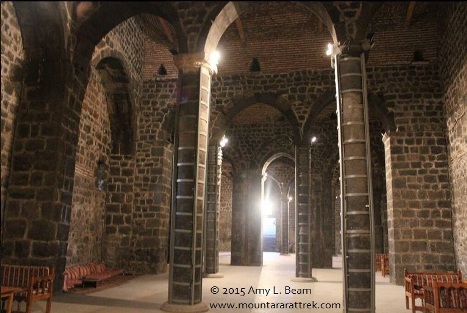
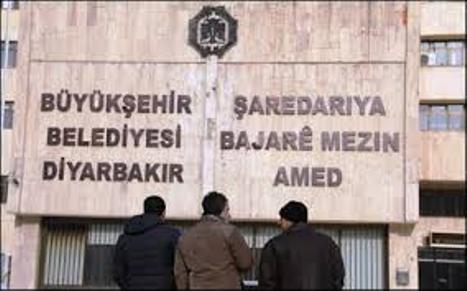
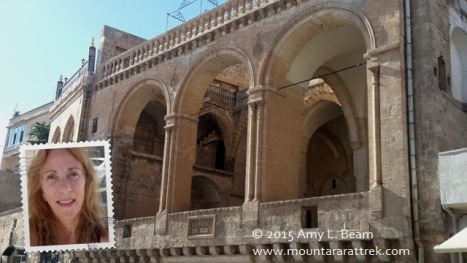
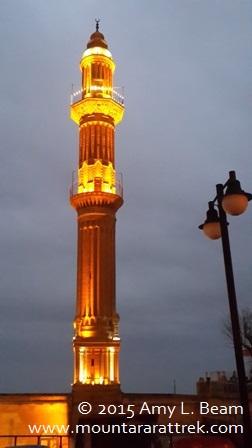
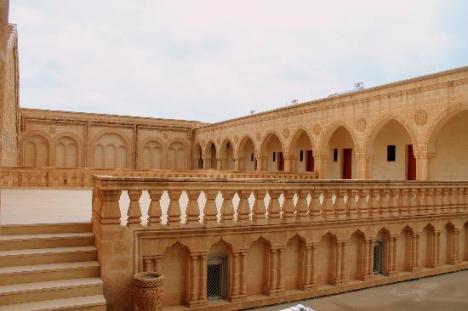
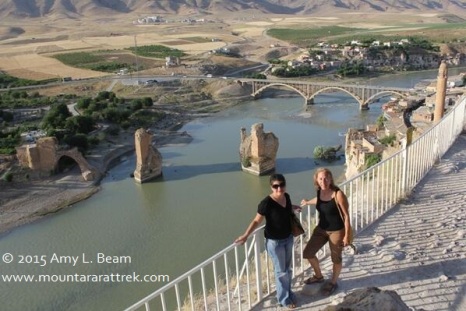
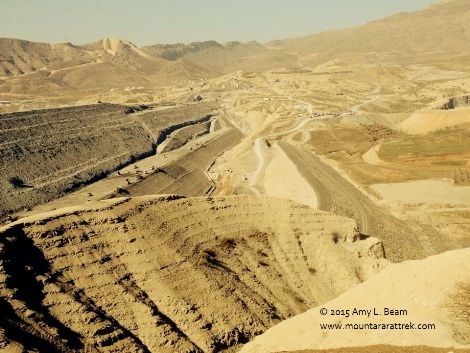

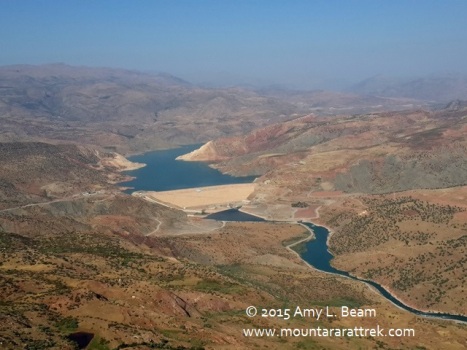
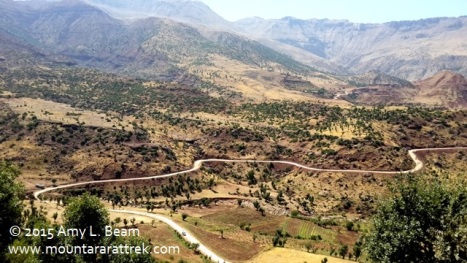

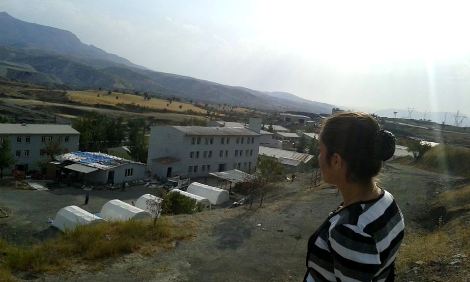
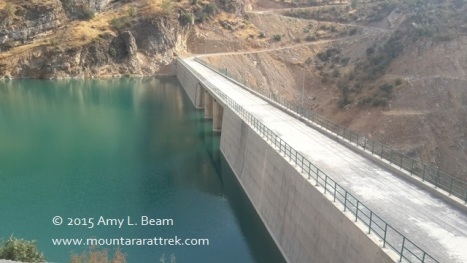
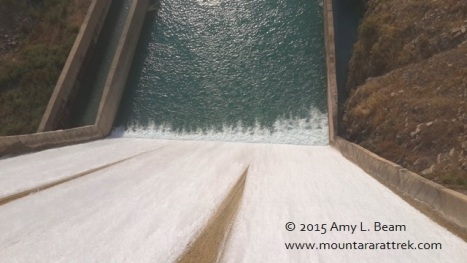

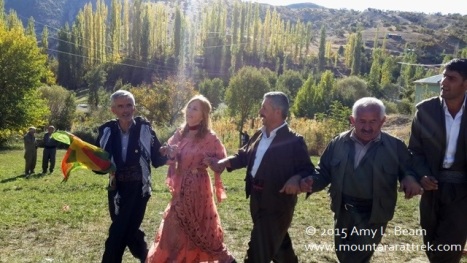
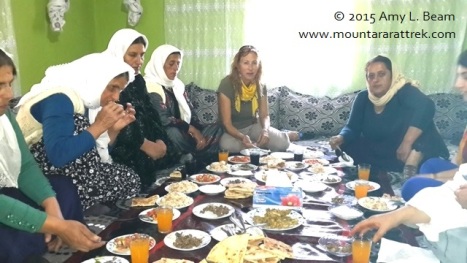
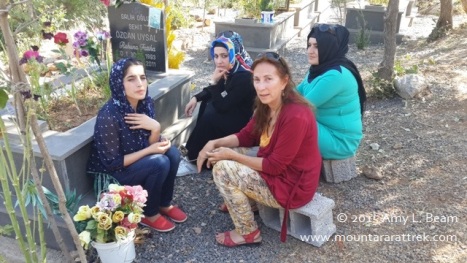


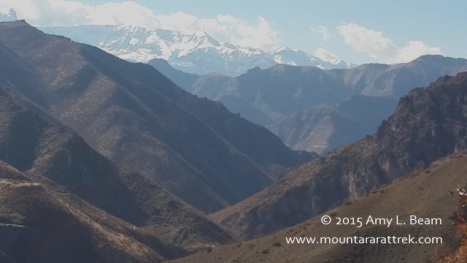
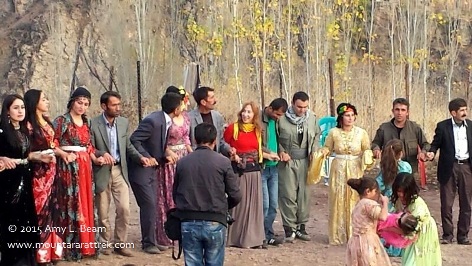
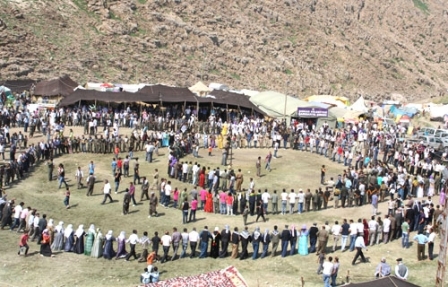
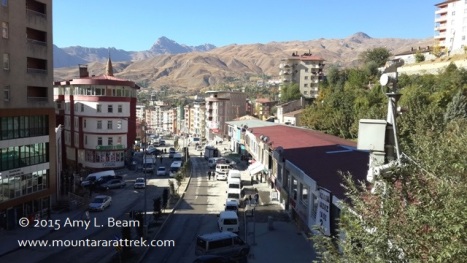
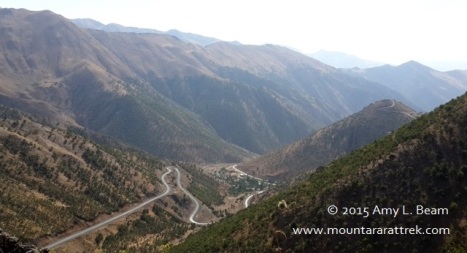
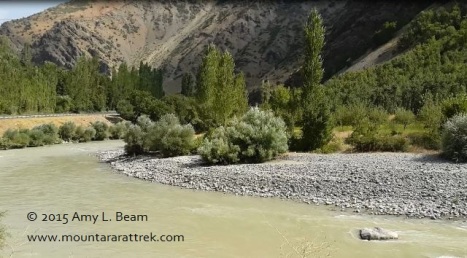
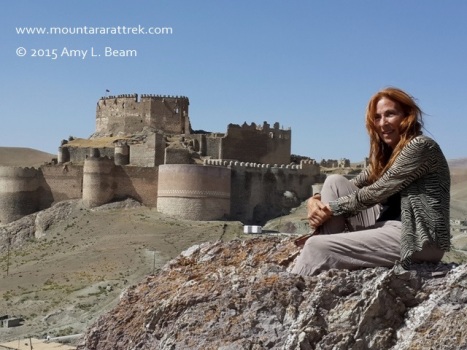
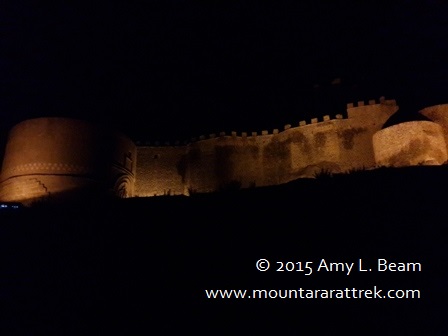
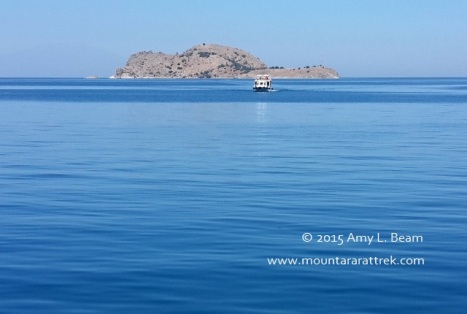
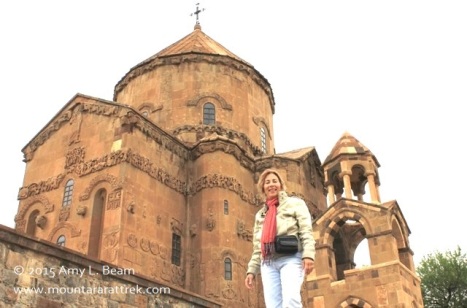
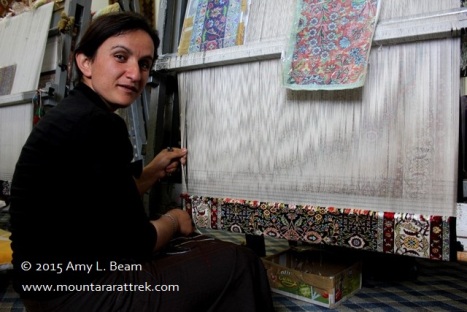


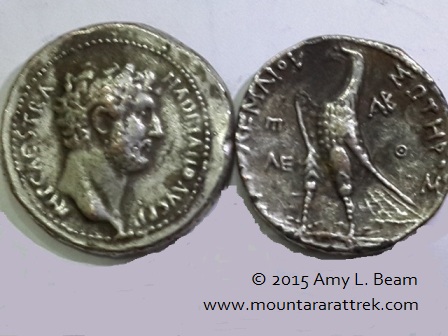
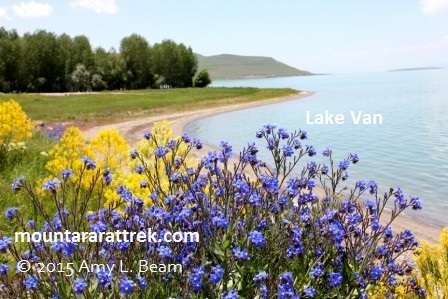
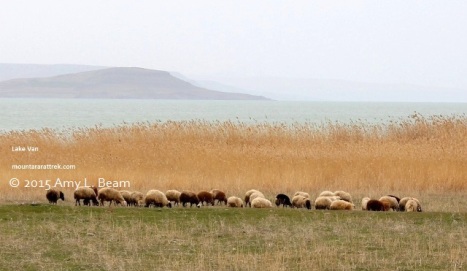


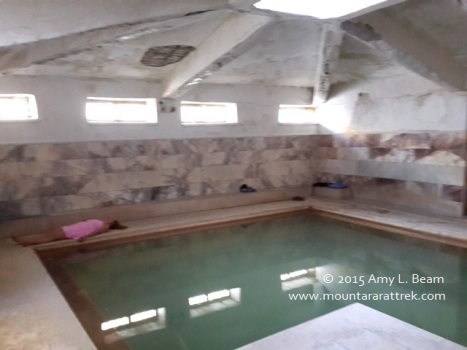
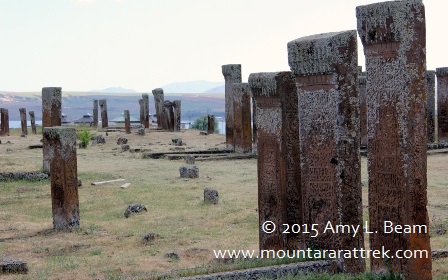
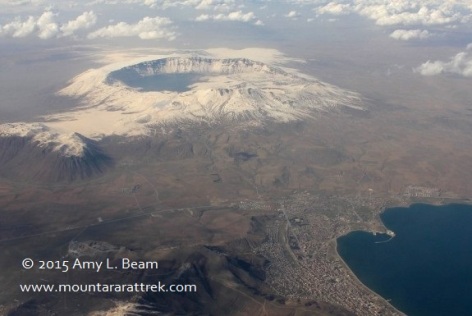


Hi Amy,
Thank you very much for the column, it took me there again. Since i am a tour guide, i visit South East anatolia frequently along the year and you even been to the places i havent been yet, but i will be… however, you are mistaken about the tomb stones in Ahlat, they are all Turkish grave stones that you can read from the inscriptions carved on top of the stones with Arabic which was used by the Turkish communities at that time.
cheers,
Kadir
Kadir, thank you for your comments. Can you share some sources for your info on Ahlat tomb stones? As you know, Turkey is known for destroying all things Armenian and claiming they never existed. I should tell you about the Armenian cemetary in Dogubayazit that the government plowed under about 8 years ago and did not even have the respect to cover the bones. Bones, skulls, hip joints, jaws are scattered everywhere. The broke the tombstones and put them as the foundation of the road up the hill to Ishak Pasa Palace.
So, yes, I’d like to get the accurate info on Ahlat.
Thanks to all the Kurds in North Kurdistan who wrote me from Beytussebap, Sirnak, Hakkari to prove that the southeast of Turkey is beautiful and safe. There are beautiful, warm people there who want to see foreigners visit them.
Amy,
Is it still safe to go to Gaziantep, Halfeti or Harran after all these bombings in Suruc? I am planning a trip next year and just wondering whether all this PKK or ISIS business will by in my way to see South-East Turkey? My other question would be whether Hasankeyf is already under water or not? Please let me know if you can. Thank you very much. Nelya
Yes, Nelya, it is still safe to go to SE Turkey. Kurds will help you in every way. Hasankeyf is not (yet) under water. See it soon. South Kurdistan is even more peaceful. It is a great awakening experience to visit a region with millions of displaced persons and to be part of the Kurdish struggle for their rights. Everyone you meet has a BIG story.